
Herbs THYMUS SERPYLLUM BULK PURPLE CREEPING 7.5 GRAM Approx 45,000 SEEDS THYME Garden & Outdoors
Creeping thyme is low-growing and spreading, growing a maximum of 5-10cm high and 20-30cm across. How to plant creeping thyme Plant creeping thyme in spring, or autumn in mild areas, in soil that drains freely and with no danger of waterlogging in winter. To grow in pots, use soil-based potting compost and add coarse grit to boost drainage.
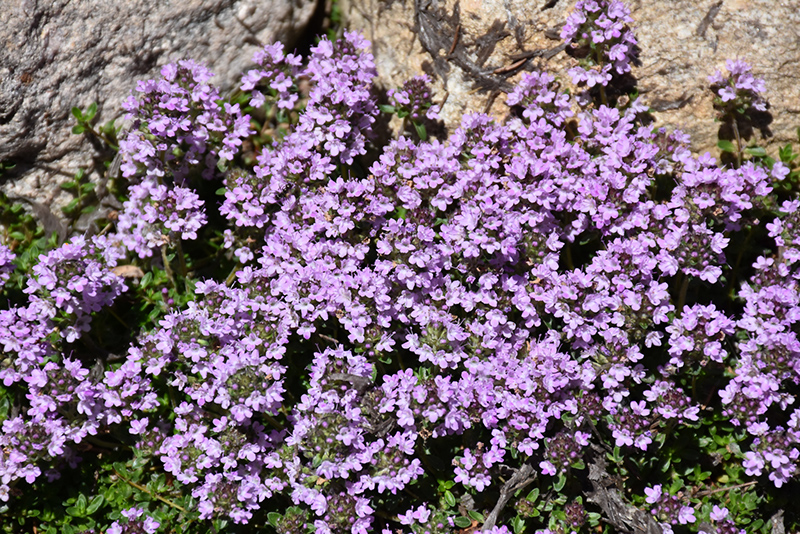
Purple Carpet Creeping Thyme (Thymus praecox 'Purple Carpet') in St Thomas Port Stanley London
Thymus praecox 'Purple Carpet' Creeping Thyme USDA Zone: 2-9 Plant number: 1.515.110 There are a great many selections of Thyme grown in gardens, all of them with some degree of spicy fragrance. This flat-growing variety features tiny dark green leaves, smothered by bright mauve-purple flowers in early summer.
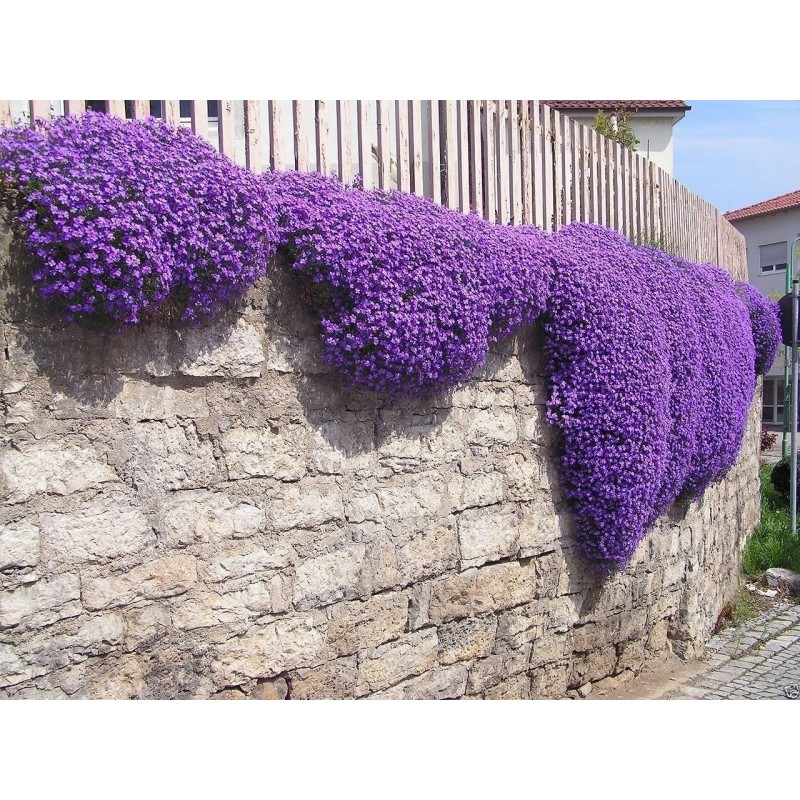
Purple Creeping Thyme Seeds (Thymus Serpyllum) Price €1.95
Creeping thyme is a beautiful herbaceous ground cover shrub-like plant that spreads out to form a carpet of colorful purple, red, and pink flowers. As a dwarf perennial aromatic low-growing herb, creeping thyme is perfect for growing in sunny garden landscapes.
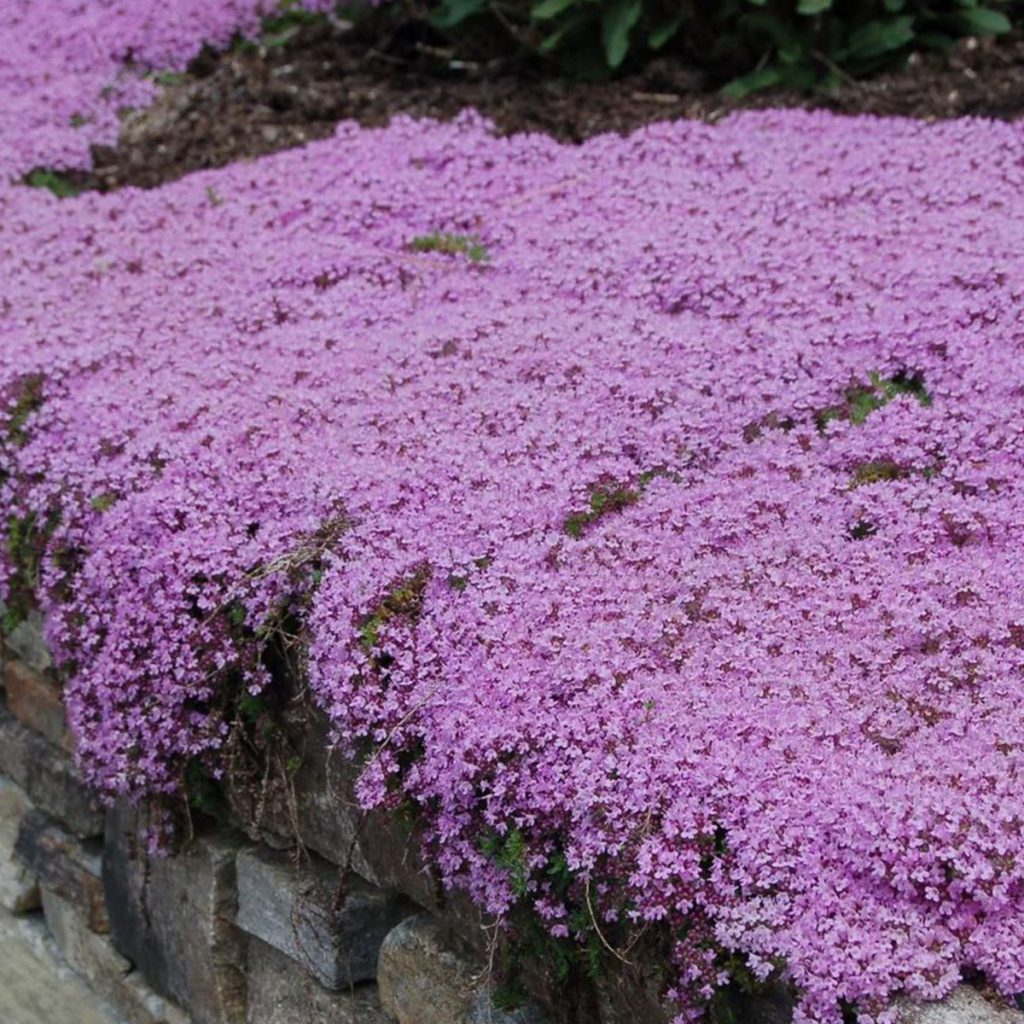
50 Purple Creeping Thyme Seeds Welldales
4. Spacing: Plant creeping thyme seeds one inch apart. Once seedlings form, transfer the new plants to their final spot, spacing them eight to twelve inches apart. 5. Sunlight: Creeping thyme thrives in full sun, though it can also do well in partial shade. 6. Water: Creeping thyme is drought-tolerant.
Flagstaff Daily Photo Creeping Thyme
Creeping thyme is a dwarf, low-growing, creeping, woody evergreen. It is grown primarily as an ornamental groundcover. The plant's leaves are aromatic, but it is not typically used in cooking.. Tiny deep pink to purple tubular-shaped flowers occur along a raceme; Creeping, prostrate, woody base which grows up to 3 inches tall and 12 inches.
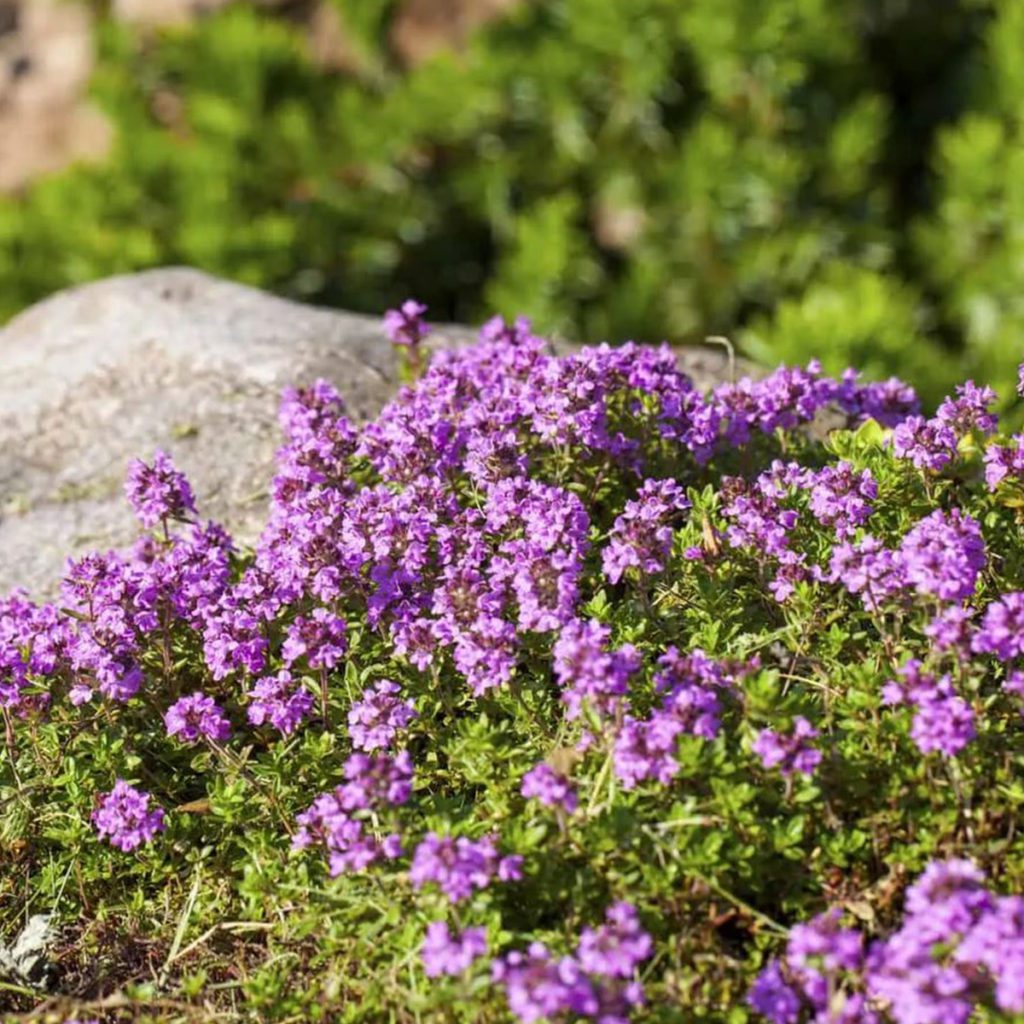
50 Purple Creeping Thyme Seeds Welldales
Splendens Purple Creeping Thyme - (Thymus praecox) - 5 Pack of Quart Pots. FREE SHIPPING. (3). Creeping Thyme are pretty little mat or carpet forming plants that are idea for use as a groundcover or to fill gaps between stepping stones and pavers. They are also a nice underplanting for rose bushes and small trees such as Japanese maples and.

Purple Creeping Thyme Seeds (Thymus Serpyllum) Price €1.95
This type of herb typically grows 2 to 3 inches tall and has fragrant, aromatic leaves with bell shaped flowers that range from pink to purple, according to the NC plant toolbox. Creeping thyme is the best option as you are not just planting grass but are making a lush herb garden. Imagine breathing in the air full of lovely aromatic scents.

Purple Creeping Thyme Herb Vegetable Seeds Thymus Serpyllum Etsy
The common name "creeping thyme" can refer to one of several woody-stemmed perennial species of the Thymus genus that are good groundcovers for sunny areas. While not all types are grown as herbs, they are in the mint family and have a pleasant scent; most can be used for cooking. It is closely related to the well-known edible herb.

50 Purple Creeping Thyme Seeds Welldales
last updated May 26, 2022 Creeping thyme, also known commonly as 'Mother of Thyme,' is an easily grown, spreading thyme variety. It is excellent planted as a lawn substitute or among stepping stones or pavers to create a living patio. Let's learn more about creeping thyme plant care. Creeping Thyme Facts

Buy Splendens Purple Creeping Thyme Plants FREE SHIPPING 5 Pack Thymus praecox in Quart Pots
Discover the charms of creeping thyme, a resilient and aromatic groundcover that attracts bees and butterflies. Learn how to make the most of creeping thyme in your landscape.. Usually in shades of pink or purple, although some cultivars have red or white blooms. Foliage: Slightly hairy and elliptical, growing to 1/4 inch in length. May be.

Creeping Thyme Ground Cover Seeds Thymus Serpyllum Magic Carpet Mixed with Vermiculite
(Image credit: Kristen Taylor) By Amy Grant last updated June 25, 2021 Any time is a good time to grow thyme. It's true. There are over 300 thyme varieties in the mint family of Lamiaceae, of which thyme is a member. All have been prized for centuries for their fragrance, flavor, and ornamental habit.
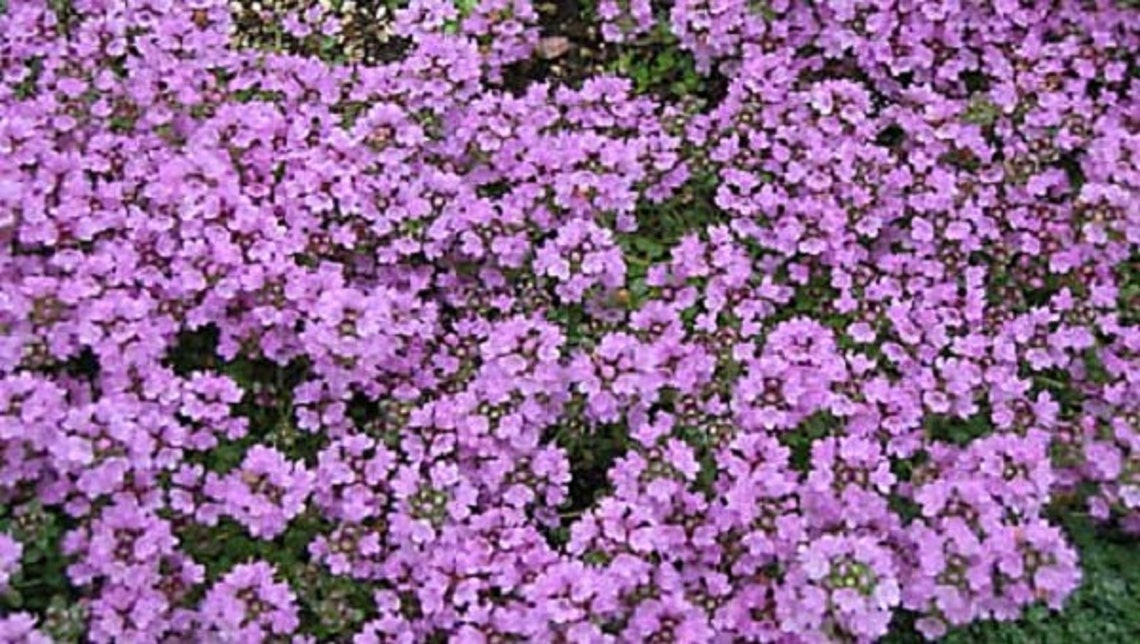
Purple Creeping Thyme Flower Seeds / Thymus / Perennial 120 Etsy
Megan Machucho Updated: May 10, 2023 6:19 PM EDT "Purple Carpet" creeping thyme is a beautiful, colorful alternative to grass. photo by Megan Machucho White, Purple, and Red Creeping Thyme If you are looking to add some color and depth to your garden or lawn, you can achieve that with a ground cover plant.
:max_bytes(150000):strip_icc()/types-of-creeping-thyme-2132329_05-ddf741097eaf4b50992c20fb46800aef.jpg)
Creeping Thyme Care and Growing Guide
April 18, 2021 by Eleanor Wells Thymus praecox A sweet smell of earthy, herby goodness wafts through the air, welcoming you into the garden. One step forward leads you onto a low-growing mat of spicy, lilac-flowering thyme.
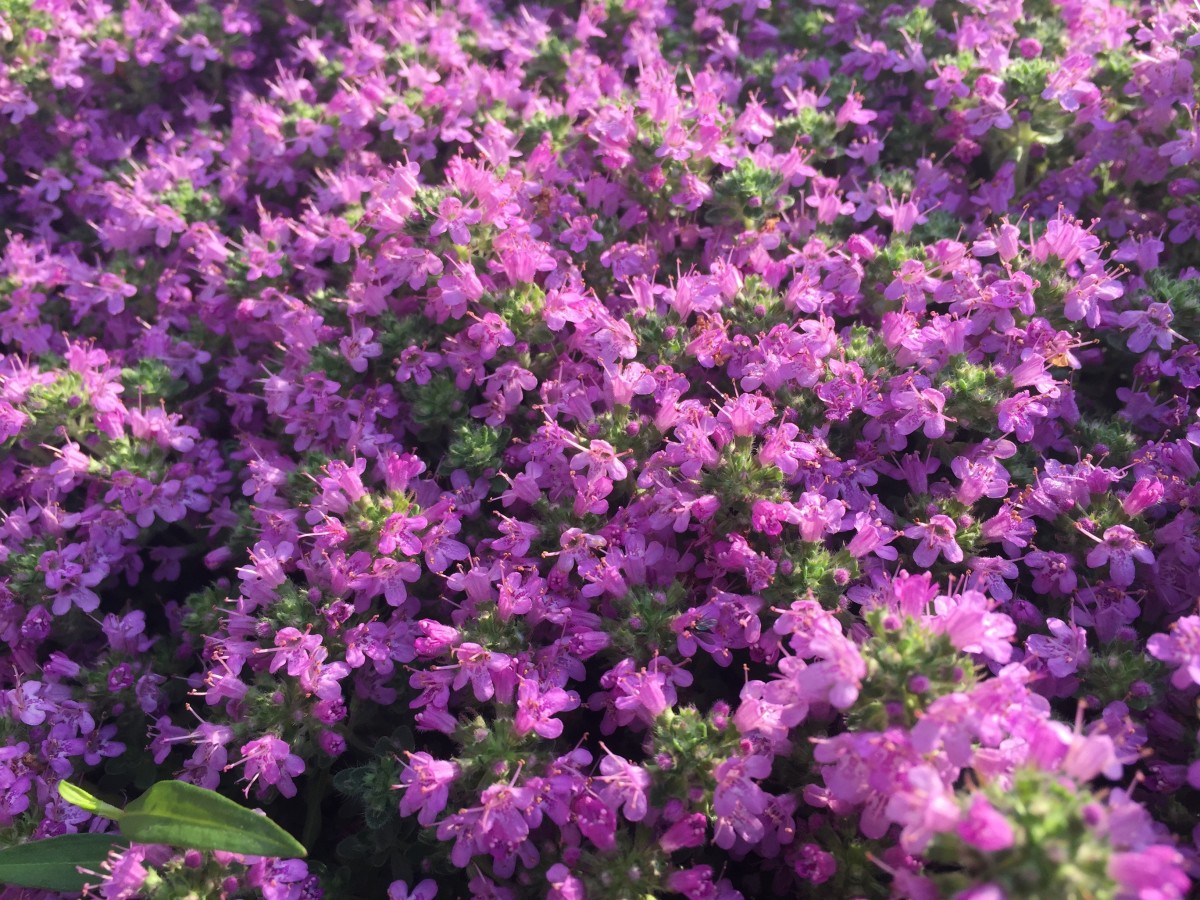
Creeping Thyme Ground Cover Types, Care, and Propagation Dengarden
All About Creeping Thyme When flowering, creeping thyme develops a pink to purple mat across its foliage. Source: pellaea. There are two key varieties of thyme with a low growing habit that gives rise to the common name 'creeping thyme': Thymus praecox, also known as the mother of thyme, and Thymus serpyllum, commonly referred to as wild thyme. . There's plenty of coverage no matter.
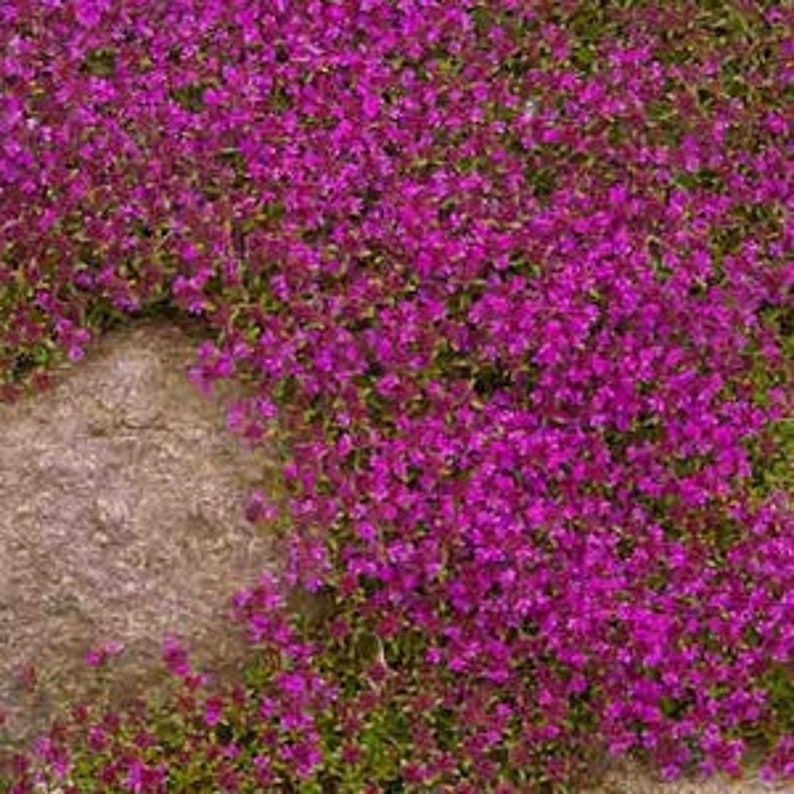
Creeping Thyme Magic Carpet Purple Thymus serpyllum/Dwarf Etsy
Purple creeping thyme growing in between stepping stones on a Xeriscape patio Creeping Thyme for Landscaping Creeping thyme has many uses, but it's the best choice for groundcover for your flowerbeds. Using creeping thyme as groundcover chokes the life out of invasive weeds, keeping your flowerbeds free from weed growth.
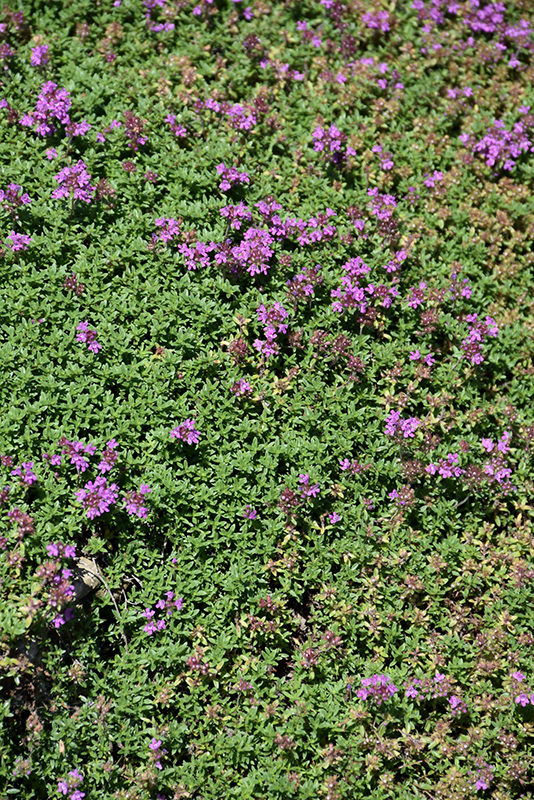
Creeping Thyme (Thymus serpyllum) in San Antonio, Texas (TX) at Rainbow Gardens
Iris spuria, or blue flag, is a species of the genus Iris, part of the subgenus Limniris and the series Spuriae.It is a rhizomatous perennial plant, from Europe, Asia and Africa.It has purple or lilac flowers, and slender, elongated leaves. It is widely cultivated as an ornamental plant in temperate regions and hybridized for use in the garden. It has several subspecies; Iris spuria subsp.